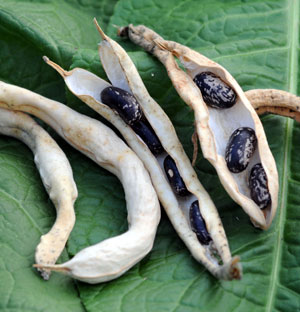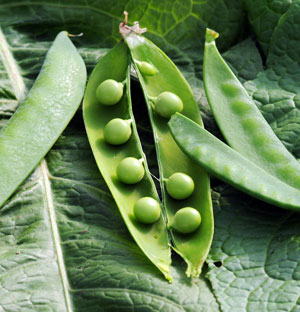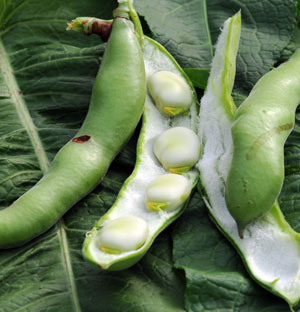Welcome to Relaxed Farming
- Alpacas
- Chickens
- Dairy Goats
- Ducks
- Geese
- Pigs
- Pygmy Goats
- Quail
- Rabbits
- Sheep
- Turkeys
- Polytunnel
- Photo Stories
- Video Stories
- Food
- Smallholding Map
- 2013
- 2014


- August
- September
- October
- November
- December
- January
- February
- March
- April
- May
- June
- July
- August


- 1
- 2
- 3
- 4
- 5
- 6
- 7
- 8
- 9
- 10
- 11
- 12
- 13
- 14
- 15
- 16
- 17
- 18
- 19
- 20
- 21
- 22
- 23
- 24
- 25
- 26
- 27
- 28
- 29
- 30
- 31
Saturday, 25th October 2014
We finished picking our French dwarf beans (FDB) towards the end of August, leaving the plants in the ground but not watering them in order that any remaining seed pods would dry, so allowing us to harvest the seeds themselves ready for planting in the spring (left hand photo). As the FDB plants were strong and disease free, there should be no problem in planting the seeds from this year's harvest. However, if they had been weak, produced few beans and/or were diseased, it would be unwise to use them to produce next year's crop.
For plants such as FDB, peas (middle photo) and broad beans (right hand photo), collecting seeds like this really is a bit of fun and means we do not need to buy seeds next year, so making the smallholding even more self-sufficient.
It is possible to collect seeds in this way year-on-year as long as you choose the healthiest and strongest plants each time.
In the case of some plants however, this is not possible to do: F1 hybrids are seeds developed from two specific plants and will usually give a very good crop BUT their seeds may be infertile or give plants which do not produce fruits - our Hungarian wax peppers are an example of this.


